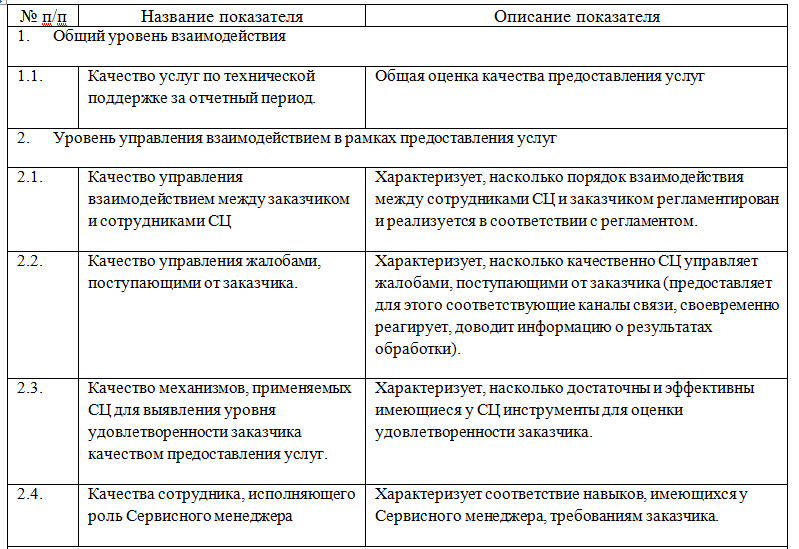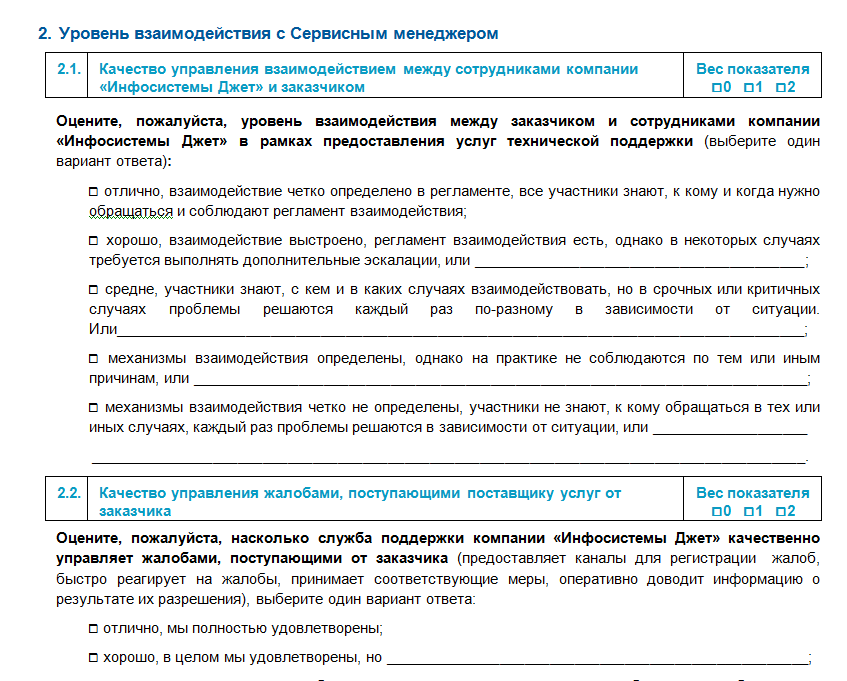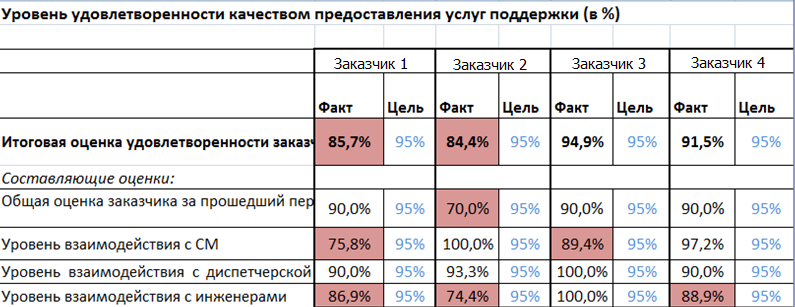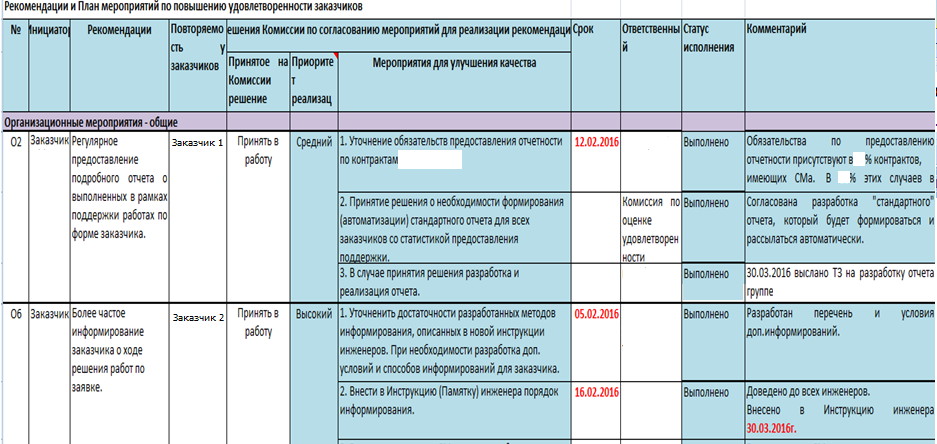Satisfaction JET or how we manage customer satisfaction

At the beginning of 2016, our Service Center - one of the largest in Russia and the CIS - began to apply a technique called “the process of managing customer satisfaction with quality of services”. Two years have passed since then, we have gained experience and statistics, and today we are ready to tell you what our work process has given us and our clients.
What is satisfaction?
I will say at once: “customer satisfaction” for us is not a managerial marketing buzzword, but an extremely important assessment of technical and business processes. We provide technical support and IT outsourcing services to many large companies, leaders in their respective industries. The size of the IT infrastructures and the sales / services / finances of our clients are such that without regular monitoring of the quality of our services, it is very easy to lose the clients themselves.
There are many ways to assess customer satisfaction. One of the options is from reports of support services to pull up information on the performance of obligations under contracts, including SLAs. But these dry figures will not help to get into the customer’s head and understand: what does he really think about our work?
')
I will give an example. The service company can regularly comply with SLA and other contractual obligations, and the customer may still be dissatisfied with the service. After all, in addition to objective criteria that can be calculated, subjective factors like the “general impression” also make their contribution. How do they communicate with you, do they delve into your needs, how do the service companies organize the application and feedback processes, how competent are their requests, how are they coordinated, how much are the proposed solutions rational under specific conditions, and much more. All this significantly affects the overall customer satisfaction with the quality of services. This means that it may affect its choice of supplier. Actually, as in any other field - from the sale of coffee in a stall to the construction of factories. All this significantly affects the overall customer satisfaction with the quality of services. This means that it may affect his choice of supplier the next time.
In other words, satisfaction is a subjective assessment of how the actual quality of services corresponds to the customer's expectations. Therefore, we have included in our methodology a variety of aspects of customer interaction.
Implementing a satisfaction management process
First of all, we developed a scorecard, on the basis of which an integrated satisfaction score is calculated. We tried to identify the most important aspects that affect the overall customer satisfaction, that is, we translated the subjective impressions of our customers into the language of formulas and at the same time described how to collect information about satisfaction on a regular basis and what needs to be done to improve it (as you understand, this is not about fraud with statistics :)). First, we outlined the levels of interaction with the customer. For example, the level of management of interaction within the framework of the provision of services (this is the level of the service manager who is responsible for managing the interaction with the customer), the level of execution of requests and interaction with engineers, dispatching services, etc. For each level, a list of indicators was formed, on the basis of which the assessment is carried out. Fragment of the scorecard:

For each indicator in the questionnaire of the customer, there are auxiliary questions, on the basis of which the customer can evaluate each indicator on a 5-point scale. Questionnaire fragment:

In the calculations, we also estimate the weights of the indicators, which for different customers may have different values. The general formulas for calculations are as follows:

As a result, for each customer, an integrated assessment of his satisfaction with the quality of the provided support services is obtained, and we can further compare the improvement / deterioration of satisfaction in dynamics. Evaluation also allows you to immediately identify at what level of interaction there is a deterioration, and what exactly the customer is dissatisfied with, in order to carry out corrective measures then point to point.
Our satisfaction management process consists of several steps.
- First, we form target groups of customers. Since we have a lot of customers, first a sample of customers is formed, for which the next assessment will be conducted. The Service Center management (hereinafter SC) sets the conditions for sampling - for example, VIP customers, customers with contracts not below a certain level, new customers, customers with whom we support a certain class of equipment or provide certain services. Customers who have ever been in the sample are further tracked over time.
- Then we estimate the current level of satisfaction (as a percentage) of each of the customers. To do this, we interview customer representatives. In order to make the assessment as complete and reliable as possible, independent Jet employees are involved in the survey. They meet in person with the employees of the client companies (or call each other if the client is in another city). No formalism - just live communication.
- Based on the data collected, we estimate how customer satisfaction corresponds to the target value.

- In a single database we collect all comments and suggestions made by customers.
- We are developing an action plan to eliminate customer comments and increase their satisfaction.

- After all the events in the next assessment, we will definitely discuss with the customer how satisfied he is with the result of eliminating the comments he made earlier.
What is the use of all this to customers?
- They have an additional channel of communication with the SC, through which you can handle your comments and suggestions about the quality of services.
- Customers receive information about the decisions of the SC about their comments and suggestions.
- Also, customers can independently assess the effectiveness of SC activities to improve the quality of services.
- As with any consumer of services, the customer needs additional attention to his needs, the ability to give feedback.
What about us:
- We received an additional source of customer satisfaction information.
- Now it is possible to quantify - and with higher accuracy - assess satisfaction with different levels and areas of interaction with the customer.
- We have the opportunity to purposefully, fully and to a point increase customer satisfaction (each and every one separately), based on the list of comments and suggestions received from customers to the level of support provided.
- We also get an assessment of our work by the consumer (customer) to increase his satisfaction.
As a result, SC can always be aware of the real situation with customer service and constantly improve the quality of services.
results
What have we achieved thanks to the satisfaction management process?
Now in the SC is the third wave of evaluation. Since 2016, the annual dina
Mika is tracked by us for 30 customers. Statistics of the level of satisfaction with the results of assessments at the current moment looks like this:

According to the obtained results, the customers each year rather highly appreciate the quality of our technical support and IT outsourcing services - all customers note that the staff at SC Jet provide high-quality technical support and are always ready to help, sometimes even if problems arise and do not belong to the area their responsibility. However, customers made comments and suggestions that could further improve our interaction.
Based on comments received and suggestions from customers, we implemented the following events:
- Improved internal SC procedures. For example, they changed the procedure for departure of engineers for routine inspections, updated the exchange of information between departments of the SC during the inventory, improved the procedure for storing and issuing customer details.
- Improved general procedures for interaction with the customer. For example, they corrected the rules for informing customers about the progress of work on their applications, developed a unified procedure for interaction with the customer in the framework of providing support, developed a standard report on the support provided.
- Conducted the elimination of comments and the implementation of the wishes of customers. They provided customers with detailed explanatory information in case of impossibility to fulfill certain requirements.
- We trained SC engineers in areas where customers had suggestions for improving current competencies.
- Automated SC management systems to speed up the provision of information on the SC self-service portal and when generating reports.
We will certainly notify our customers of the results of the elimination of comments and the implementation of relevant activities on our part, including as part of subsequent satisfaction assessments. This approach allowed us to increase customer confidence in the procedure for assessing their satisfaction. Now they know for sure that this is not a formalism, that they even listen to their opinions and do not disregard all the wishes and comments expressed by them. As a result, the customer now tries to invite as many representatives as possible to the satisfaction assessment meetings in order to work out the current state as fully as possible and to identify existing shortcomings. :) This approach allows us to be closer to the customer, to work out in all areas of interaction with him.
In this article we shared our experience in implementing customer satisfaction management, but I would like to note, perhaps the most important thing: whatever tool you use, the most important thing is the lack of formalism. The customer feels subtly how much you are interested in getting full feedback from him and honestly working it out, and if you are cunning, then no super methods will help, and the result will be appropriate. :)
Olga Burnosova. Customer Satisfaction Management. Jet Infosystems
Source: https://habr.com/ru/post/347472/
All Articles